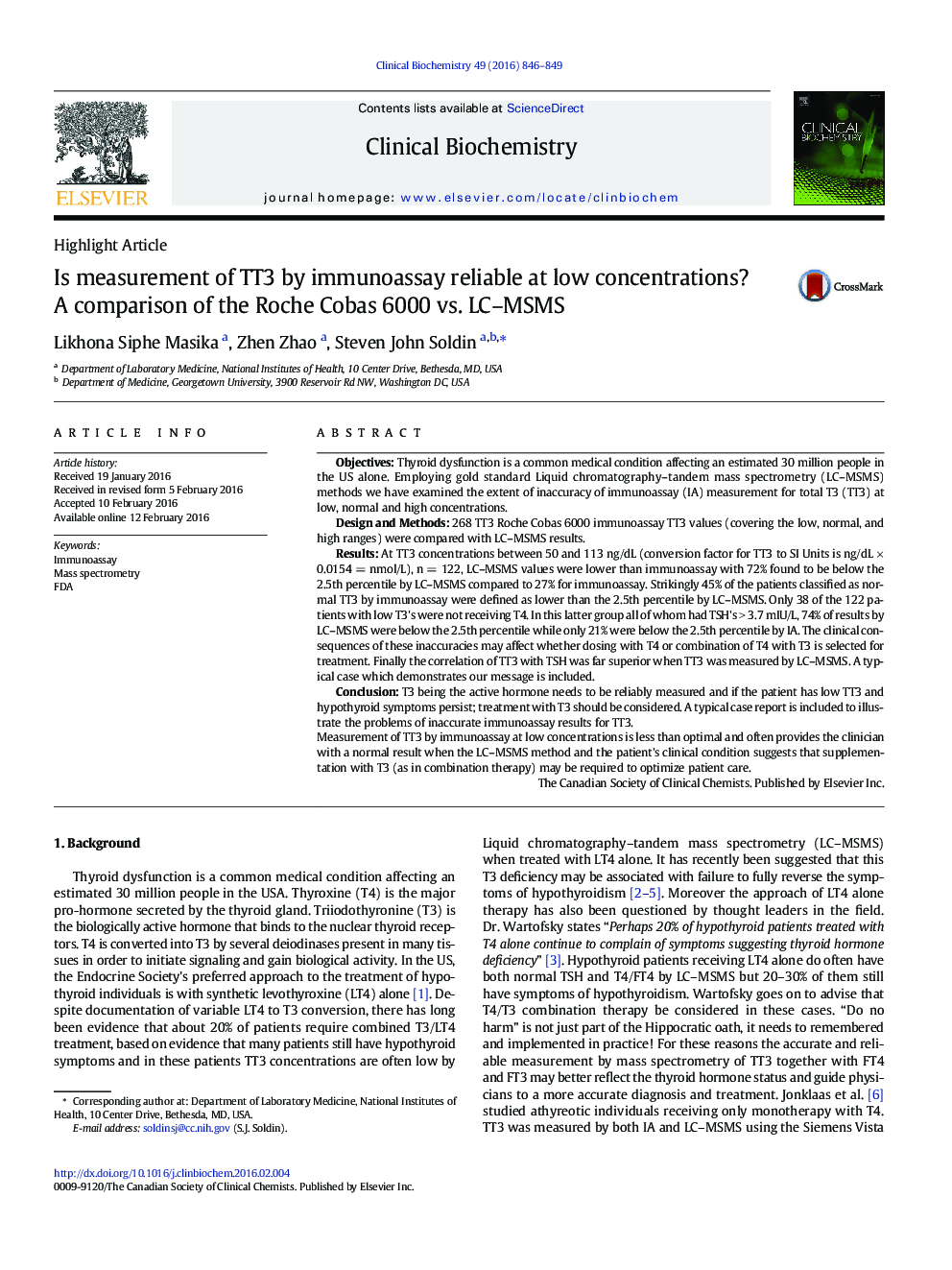| کد مقاله | کد نشریه | سال انتشار | مقاله انگلیسی | نسخه تمام متن |
|---|---|---|---|---|
| 1968502 | 1059723 | 2016 | 4 صفحه PDF | دانلود رایگان |
• QUESTION: Can LC-MSMS measurement of TT3 help facilitate the diagnosis of hypothyroidism?
• We focused on patients with immunoassay values between 50 and 113 ng/dL.
• 74% of individuals not taking T4 were below the 2.5th percentile by LC-MSMS. This compares to 21% by IA.
• Combined T4/T3 dosing needs to be considered in about 20% of hypothyroid patients.
• As T3 is the active hormone it is important that physicians be provided with accurate LC-MSMS analysis of TT3.
ObjectivesThyroid dysfunction is a common medical condition affecting an estimated 30 million people in the US alone. Employing gold standard Liquid chromatography–tandem mass spectrometry (LC–MSMS) methods we have examined the extent of inaccuracy of immunoassay (IA) measurement for total T3 (TT3) at low, normal and high concentrations.Design and Methods268 TT3 Roche Cobas 6000 immunoassay TT3 values (covering the low, normal, and high ranges) were compared with LC–MSMS results.ResultsAt TT3 concentrations between 50 and 113 ng/dL (conversion factor for TT3 to SI Units is ng/dL × 0.0154 = nmol/L), n = 122, LC–MSMS values were lower than immunoassay with 72% found to be below the 2.5th percentile by LC–MSMS compared to 27% for immunoassay. Strikingly 45% of the patients classified as normal TT3 by immunoassay were defined as lower than the 2.5th percentile by LC–MSMS. Only 38 of the 122 patients with low T3's were not receiving T4. In this latter group all of whom had TSH's > 3.7 mIU/L, 74% of results by LC–MSMS were below the 2.5th percentile while only 21% were below the 2.5th percentile by IA. The clinical consequences of these inaccuracies may affect whether dosing with T4 or combination of T4 with T3 is selected for treatment. Finally the correlation of TT3 with TSH was far superior when TT3 was measured by LC–MSMS. A typical case which demonstrates our message is included.ConclusionT3 being the active hormone needs to be reliably measured and if the patient has low TT3 and hypothyroid symptoms persist; treatment with T3 should be considered. A typical case report is included to illustrate the problems of inaccurate immunoassay results for TT3.Measurement of TT3 by immunoassay at low concentrations is less than optimal and often provides the clinician with a normal result when the LC–MSMS method and the patient's clinical condition suggests that supplementation with T3 (as in combination therapy) may be required to optimize patient care.
Journal: Clinical Biochemistry - Volume 49, Issue 12, August 2016, Pages 846–849
